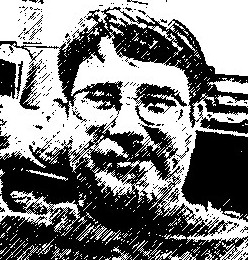I have been asked to get on the ball and finish this conversion. My deepest apologies, I had sent the body off to be painted after I narrowed it and then the hard drive that the pictures were on crashed, so I haven't done anything with the conversion articles. Back to work on it then.
Now that the locomotive had been disassembled, it's time to narrow the body before it can be painted.
To
do this you need a MicroTrains Z scale gauge, a set of calipers, a
collection of #11 Xacto blades with handle and a Dremil tool with a sanding drum. I did my
first one using only the MT wheel gauge without benefit of
calipers, but the calipers do make this job a lot easier. I had to
narrow a couple of sets of drivers for my first one because I melted the
plastic on one set and destroyed the drivers, and on the second set I
didn't chamfer the axle ends and destroyed the drivers trying to put
them back on the axles.
To shrink the body down you squeeze the
drivers in on their shafts until they fit the Z scale MicroTrains wheel
gauge (or until they are .205" back to back). Be sure that the gear is
centered between the drivers and then mark the ends,
slide the drivers off and then cut the axle stubs off (you want to
remove 0.050" from each axle end). Chamfer the axle ends to install the
drivers back on and quarter the drivers (this is how I usually do it to
prevent damage to the drivers). The axles will be 0.375" long when you
are done.
It's easier to take the drives off and
chamfer the axle ends when you are done, but pushing the drivers in and
grinding/filing off the axle stubs does work. To do it this way I push
the wheels in to fit the MT gauge, making sure the gear is centered
between them, then mark the axles with a black magic marker. Push the
wheels all the way in to the gear and cut the marked ends off of the
axles. Work slowly and let the axle ends cool between cuts so you don't
melt the driver centers. Quarter the drivers when you are done.
Next
take a file and file the bottom plate, removing 0.050" from each side,
to reduce it's width to 0.185". The rule of thumb is to file until half
of the lettering is removed from each side. Now you can reinstall the
worm gear and bottom plate into the loco shell and use it as a guide to
narrow the locomotive wheel wells. Work slowly and carefully, you will
open the tops of the wheel wells into the cavity where the worm gear
resides but this is OK. A combination of #11 Xacto blades and the large
sanding drum for the dremil tool works very well for this, but use a
variable speed tool set to a low speed setting to prevent overheating
and distorting the plastic shell. Remove the bottom plate and worm gear,
install the narrowed drivers and make sure they turn freely. Remove
material as necessary until they do.
For the pilot truck, cut the
plastic bars that hold it to the cylinders at the ends of the slot the
truck rides in, the front bar at the right side and the rear bar at the
left side, to make two L shaped pieces. Pull one wheel from each axle to
remove the axles from the truck, reinstall the wheel and squeeze the
wheels to fit the MT gauge and cut off the stub ends. File each side of
the pilot truck 0.050" to fit the narrowed axles. Reinstall the axles
and wheels into the narrowed truck, making sure they turn freely.
Now
to narrow the cylinders (this is optional but it does make the loco
look better). Trim the bottom of each L back to the cylinders to narrow
them (I really need to take some pictures of this step) and then glue
the cylinders back together, installing the pilot truck as you do so.
Cut the same amount off of each valve gear hanger on the locomotive body
so the cylinders will fit back on. Paint the locomotive body and
reinstall the cylinders and pilot truck. Don't worry about the
mechanical strength of the cylinder connecting bars too much, the
physical strength of the cylinders glued on to the locomotive body
supply most of the needed support; the bars are there mostly just to
hold the pilot truck. You can drill some holes and put in brass rods to
replace the plastic if you like.
At this point the drivers, worm
gear and bottom plate can be reinstalled. To reinstall the drive rods
you will either have to trim the locomotive body between the drivers to
clear them or bend them outward to clear the locomotive body. The
locomotive body itself is now done.
In the next installment we will narrow the tender trucks and reassemble the tender. Then the tender can be reunited with the locomotive and the finished product can be tested.
Tuesday, April 23, 2019
Subscribe to:
Post Comments (Atom)

No comments:
Post a Comment